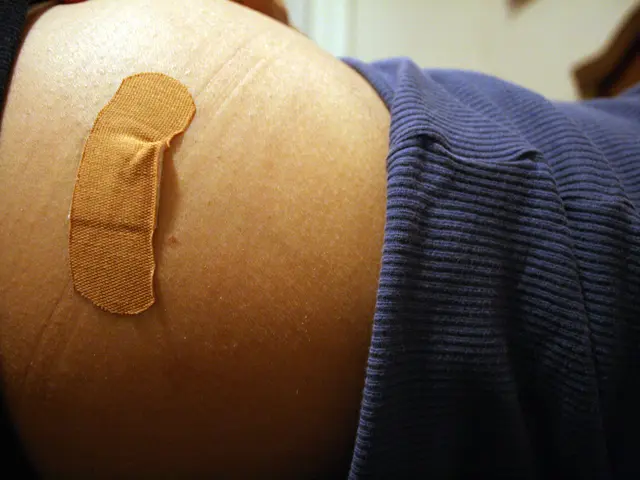Adults share experiences of life-altering ADHD diagnoses. However, some suspect they've been hoodwinked by sensationalized misinformation.
Scroll through TikTok or Instagram, and you'll likely stumble upon a flood of content involving ADHD in adults. Whether it's tips and advice, symptoms, or unique perspectives, adult ADHD has flooded social media like never before.
This trend has enabled widespread recognition and reduction of stigma surrounding ADHD, but a 2023 report by Manulife reveals a 25 percent surge in medication claims for adults with ADHD in Canada between 2021 and 2022. Previously, the average increase from 2017 to 2020 had been 15 percent. The COVID-19 pandemic, with its unmasking of symptoms hidden within structured work environments, and the rise of ADHD content on social media, are likely contributing factors.
Although socially mediated awareness has its merits, recent research from the University of British Columbia shows how misinformation on social platforms has shaped perceptions of ADHD. This has led to more improper self-diagnoses based on symptoms not in line with clinical guidelines. Experts argue that this emphasizes the need for easier access to accurate assessments.
Dr. Doron Almagor, a psychiatrist and chair of the Canadian ADHD Resource Alliance's Advisory Council, opines that though social media videos provide insights into personal experiences, they don't always offer universal symptoms.
The Spread of Misinformation
While social media platforms like TikTok and Instagram have broadened understanding of adult ADHD, several experts caution that they are also distributing false information. Almagor suggests that these platforms mostly feature people without professional qualifications discussing their own experiences, which may not align with everyone's symptoms.
A March report by UBC analyzed the 100 most-viewed TikTok videos on ADHD and found that fewer than half of the claimed symptoms adhered to clinical diagnosis guidelines. Similar findings were rolled out in a 2022 study published in the Canadian Journal of Psychiatry, with about 52 percent of the videos identified as misleading, 27 percent based on personal experiences, and merely 21 percent useful.
Many myths about ADHD have spread across social media, with one of the biggest being that ADHD is a harmless condition causing inattention or hyperactivity. However, left untreated, ADHD can result in substance abuse, psychiatric issues such as depression, marital difficulties, job losses, and even higher mortality rates.
A History of Overlooked ADHD in Adults
ADHD, originally known as attention deficit disorder (ADD), is a persistent neurodevelopmental condition typically spotted in childhood, usually before the age of 12. According to the Centre for ADHD Awareness Canada, ADHD afflicts roughly 5 to 7 percent of children, 4 to 6 percent of adults, or approximately 1.8 million Canadians.
Experts agree that ADHD was not recognized in adults until the 1990s; it's more accurately described as a disorder of attentional control and executive functioning than just inattention. Claire Sira, a registered psychologist in Victoria specializing in ADHD and an executive board member for the Canadian Psychological Association, was diagnosed with ADHD as an adult and stated that, in adulthood, it's not simply about attention: it's about disorganization, lack of control over attention, and inability to plan.
Several family physicians lack experience in diagnosing and treating adults with ADHD. As a result, the system is stretched, leading to lengthy waiting lists. The health system often does not grant physicians ample time to perform a comprehensive ADHD assessment, especially for more intricate cases. Moreover, psychologists and nurse practitioners are generally not covered under OHIP.
Gaining a proper ADHD diagnosis involves a range of psychological testing, including self-assessments, cognitive assessments, personal and family histories, medical examinations, school records, and multiple interviews, totaling up to 10 hours.
Misdiagnosis at 28
Rebecca Bruzzese had struggled with her mental health for years and, at age 28, was treated for depression and anxiety before being diagnosed with bipolar disorder and prescribed lithium for two years. However, her treatment worsened her condition, prompting her to search for other possibilities. She noticed that many behaviors originally attributed to bipolar disorder fit more under the umbrella of ADHD.
Victor Melgar was in his late 20s and was suffering from severe depression after university, participating in high-risk behavior such as sex and alcohol abuse. One night, a woman he was seeing mentioned getting assessed for ADHD, leading him to get a private evaluation using his work insurance benefits. During this process, Melgar discovered that his siblings, who had noticed his ADHD symptoms when he was younger, had hidden this information from him. Language and culture barriers made it difficult for his immigrant parents to understand and accept that their child had ADHD.
Both Bruzzese's and Melgar's diagnoses have been life-changing, offering insights, support, and improved mental health management. However, the high cost of private clinics, up to $3,000, has led many to turn to online health services offering quick diagnoses for a fraction of the cost. These online services have raised concerns about their accuracy and long-term effects.
- The surge in media coverage about ADHD on platforms like TikTok and Instagram has brought increased awareness, but experts worry about the spread of misinformation.
- A report by Dr. Doron Almagor, a psychiatrist, suggests that social media videos primarily featuring unqualified individuals may not accurately represent universal symptoms of ADHD.
- In a study by the University of British Columbia, it was found that fewer than half of the claimed symptoms in the 100 most-viewed TikTok videos on ADHD adhered to clinical diagnosis guidelines.
- Another concern is the spread of myths about ADHD, such as the belief that it is a harmless condition causing inattention or hyperactivity, which can lead to incorrect self-diagnoses and inadequate treatment.
- Adult ADHD was not widely recognized until the 1990s, despite being a persistent neurodevelopmental condition affecting roughly 4 to 6 percent of adults in Canada.
- Gaining a proper ADHD diagnosis involves extensive psychological testing, interviews, and medical examinations, often leading to lengthy waiting lists in the health system due to limited resources and coverage for psychologists and nurse practitioners.








